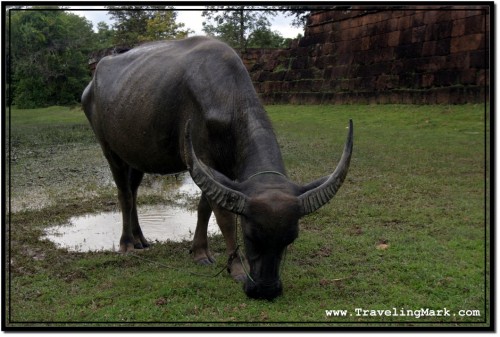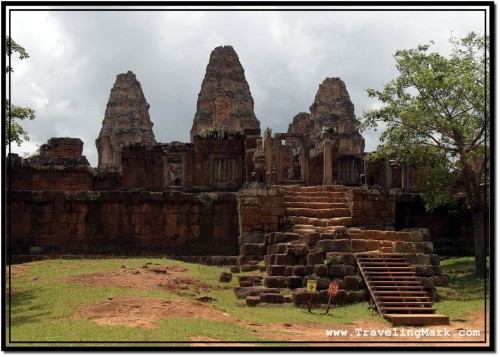Being of European descend and living in Canada, I had not been exposed to Asian Water Buffalo until I took this trip to Cambodia. My parents did not farm, but I grew up in rural areas so my encounters with livestock were plentiful. Alberta Beef is renowned around the world for its quality, flavor and tender, juicy texture covered in firm white fat. 60% of all Canadian beef comes from Alberta. As a matter of fact, anyone who visits Alberta and doesn’t exclusively stick with the large cities is bound to see herds of free range cattle enjoying a pasture on Alberta farmlands. Hence even though not a farmer myself, I knew exactly what cattle look like. But that is not at all what they look like in Asia.

I didn’t have my first encounter with an Asian Water Buffalo until I started riding around Angkor Archaeological Park. Asian Water Buffalo didn’t look anything like what I would expect from a domestically grown animal. They appear much rougher and have much scarier horns than any cattle I’ve seen before. If there were no herders around those animals, I would have thought they were wild.
True wild Water Buffaloes are allegedly hard to come by nowadays. They say one could still have an encounter with them in India where cows are deemed sacred animals, but you can roam the jungles of Cambodia back and forth all you want and all you’ll find are the same domestically grown breeds I saw when I saw there. For a person who’s never seen one, they are definitely a sight to behold but quickly become a fad because they are plentiful and easy to come by all over the place (just as cattle in Alberta).

One thing you notice about Asian Water Buffaloes is that they like mud and shamelessly roll around in it whole day. That’s not really surprising since more than 95% of all world’s Water Buffaloes are bred in South or South East Asia where it’s always hot and stuffy so a dip in any form of moisture is a nice escape from scorching heat plus a layer of mud could serve as a decent shield against bountiful mosquitoes and other biting insects. The trick is that this mud only exists in South East Asia in the rainy season. How water buffalo escape the heat and mosquitoes in the dry season is anybody’s guess.



